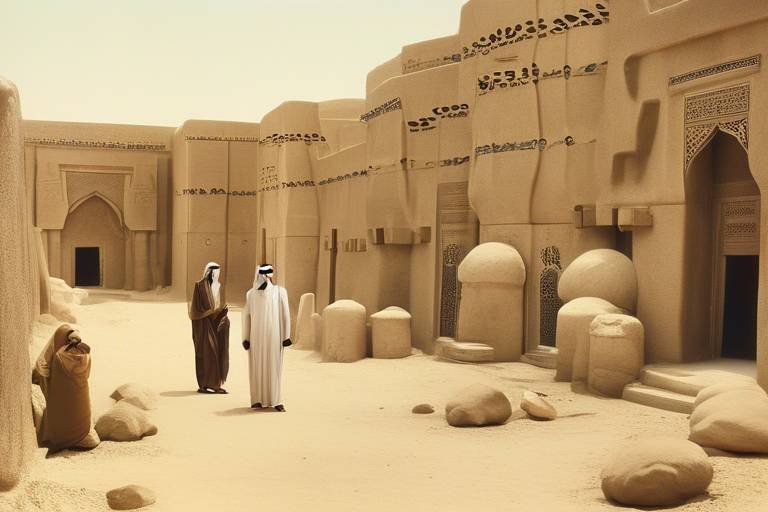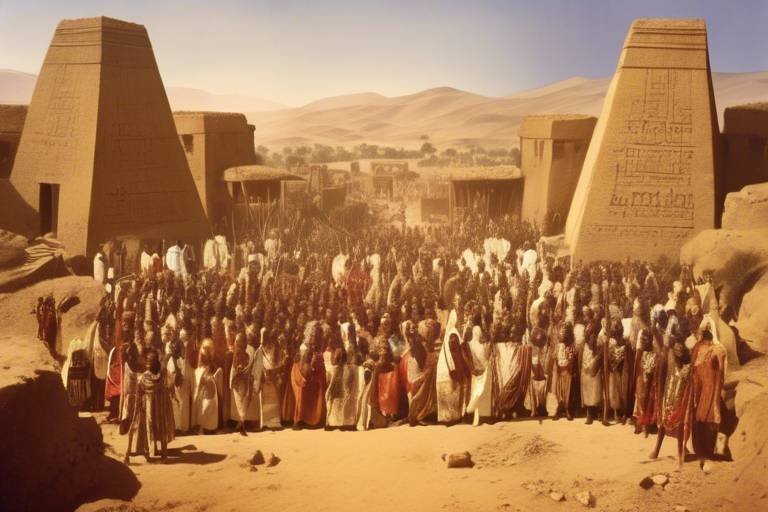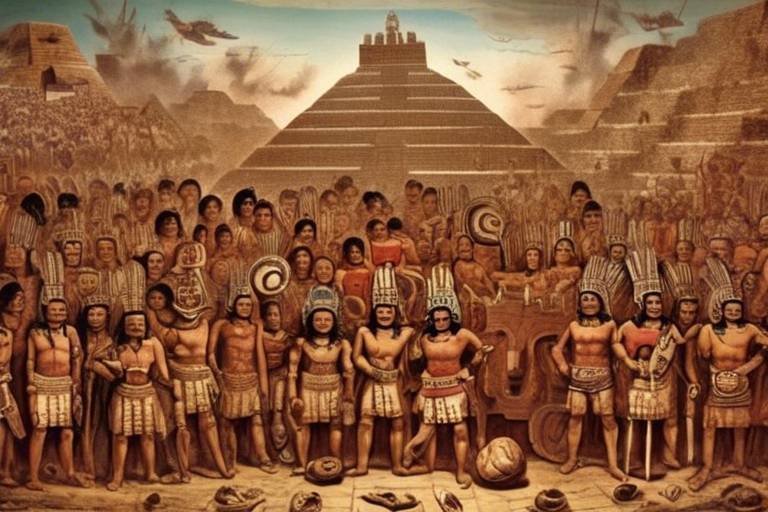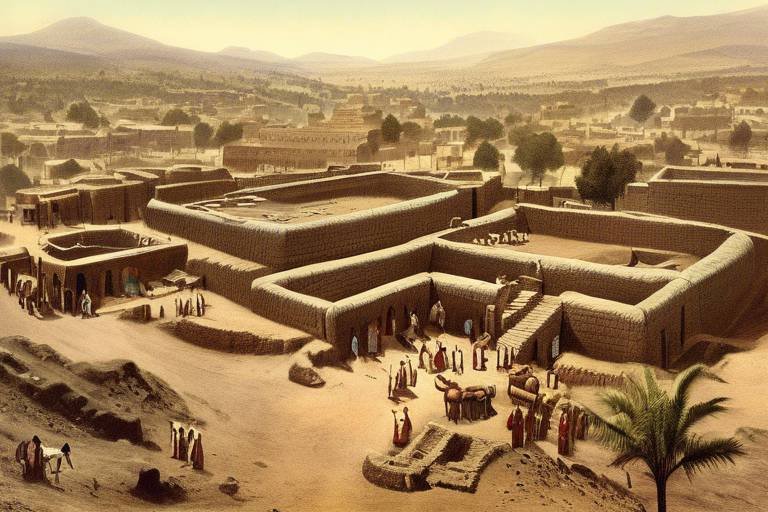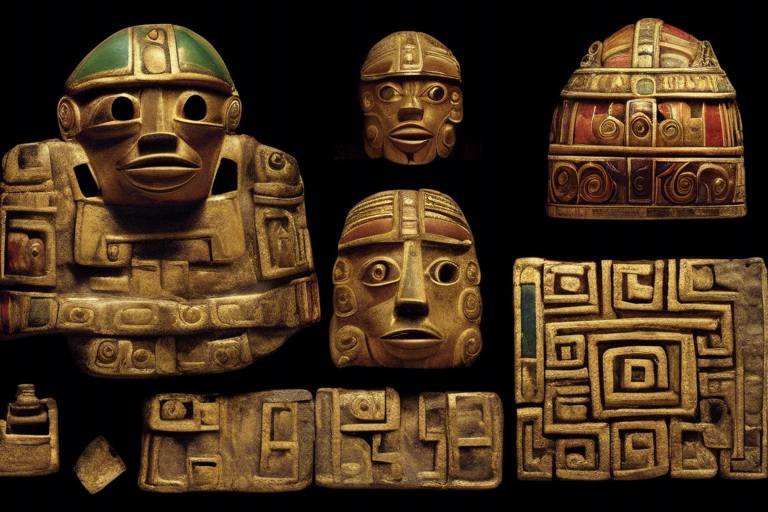The Decline of the Easter Island Civilization - Lessons Learned
The story of the Easter Island civilization is a cautionary tale that echoes through the corridors of time, reminding us of the delicate balance between human prosperity and environmental sustainability. Once a thriving society, the inhabitants of Easter Island faced a series of challenges that ultimately led to their downfall. By examining the events that unfolded on this remote island in the Pacific Ocean, we can glean valuable insights and lessons that are still relevant in today's world.
Centuries ago, the early settlers of Easter Island embarked on a journey that would shape the course of their civilization. As they established their community on this isolated landmass, they developed a unique culture known as Rapa Nui. Through their ingenuity and resourcefulness, they flourished, creating awe-inspiring stone statues that stand as a testament to their creativity and craftsmanship.
However, the prosperity of the Easter Island civilization was not destined to last. Environmental degradation and resource depletion began to take their toll, as deforestation ravaged the once lush landscape. The unchecked growth of the population and the relentless exploitation of natural resources pushed the society to the brink of collapse, signaling a stark warning about the consequences of unsustainable practices.
The impact of deforestation on the ecosystem was devastating, leading to a cascade of effects that disrupted the delicate balance of the island's biodiversity. Soil erosion, loss of habitat, and dwindling resources all contributed to the unraveling of the once-thriving ecosystem, underscoring the interconnectedness of all living beings on the island.
Amidst the environmental challenges, the social and cultural dynamics of the Easter Island civilization also played a crucial role in its decline. Competition for resources, internal conflicts, and social fragmentation eroded the social fabric, sowing seeds of discord that further weakened the societal structure.
The arrival of European explorers brought new challenges to the Easter Island civilization, as diseases, exploitation, and cultural disruption left a lasting impact on the indigenous population. The clash of civilizations highlighted the vulnerabilities of the island society, exposing the fragility of human communities in the face of external pressures.
As we reflect on the legacy of the Easter Island civilization, we are reminded of the enduring lessons that can be drawn from its collapse. The need for sustainable practices, responsible stewardship of the environment, and mindful consideration of the long-term consequences of our actions are all vital takeaways that resonate in today's world.
By learning from the mistakes of the past and embracing a holistic approach to societal and environmental challenges, we can strive to build a future that is resilient, harmonious, and in balance with the natural world. The story of Easter Island serves as a poignant reminder of the power of human agency and the importance of collective action in shaping our shared destiny.

Origins of the Easter Island Civilization
The origins of the Easter Island civilization date back to around 1200 AD when Polynesian voyagers settled on the remote island in the Pacific Ocean. These early settlers brought with them a rich cultural heritage and a deep connection to the land. Over the centuries, the Rapa Nui people developed a unique society characterized by intricate stone statues known as moai, advanced agriculture techniques, and a complex social structure.
The Rapa Nui culture flourished on the island, with the construction of impressive stone platforms, intricate petroglyphs, and elaborate ceremonial villages. The society was built on a strong reverence for nature and a deep spiritual connection to the island's volcanic landscape. This harmony with the environment allowed the civilization to thrive and prosper for centuries.
One of the key factors that contributed to the initial prosperity of the Easter Island civilization was the abundance of natural resources on the island. The lush forests provided timber for building canoes, fishing tools, and the transportation of the iconic moai statues. The fertile soil supported the cultivation of crops such as sweet potatoes, taro, and bananas, ensuring a stable food supply for the growing population.
As the population of the island grew, so did the demand for resources. The Rapa Nui people began to intensify their agricultural practices, clearing more land for cultivation and cutting down trees for construction and fuel. This rapid expansion put immense pressure on the fragile ecosystem of the island, leading to environmental degradation and resource depletion.
Despite the initial success of the Easter Island civilization, the unchecked exploitation of natural resources eventually took its toll. Deforestation led to soil erosion, loss of biodiversity, and a decline in agricultural productivity. The once-thriving ecosystem began to deteriorate, making it increasingly difficult for the Rapa Nui people to sustain their way of life.

Environmental Degradation and Resource Depletion
Environmental degradation and resource depletion were pivotal factors in the downfall of the once-thriving Easter Island civilization. The lush forests that once covered the island were systematically cut down to make way for agriculture, transport, and the construction of the iconic Moai statues. This rampant deforestation had severe consequences on the island's delicate ecosystem, leading to irreversible damage and a sharp decline in biodiversity.
The loss of trees resulted in soil erosion, as the exposed land was unable to retain moisture and nutrients. This, in turn, affected the fertility of the soil, making it challenging to sustain agricultural practices that were essential for the islanders' survival. The once-flourishing palm trees, vital for food, shelter, and canoes, were decimated, disrupting the delicate balance of the ecosystem.
As the population continued to grow, the demand for resources escalated, exacerbating the strain on the island's limited natural assets. Overexploitation of marine resources further depleted the islanders' means of sustenance, leading to food scarcity and internal conflicts over dwindling supplies. The unchecked exploitation of resources ultimately hastened the collapse of the Easter Island society.
Moreover, the depletion of resources not only impacted the environment but also had profound social and cultural repercussions. The scarcity of essential materials and the breakdown of traditional practices eroded the social cohesion that had once held the community together. Competition for dwindling resources fueled conflicts among different clans, further fragmenting the already fragile societal structure.
In hindsight, the failure to implement sustainable resource management practices and the shortsighted focus on immediate gains at the expense of long-term sustainability proved to be fatal for the Easter Island civilization. The lessons learned from this environmental catastrophe serve as a stark reminder of the importance of responsible stewardship of natural resources and the dire consequences of neglecting the delicate balance between human needs and environmental preservation.

Impact of Deforestation on the Ecosystem
Deforestation on Easter Island had a profound impact on the delicate ecosystem of the island, leading to a cascade of negative consequences that ultimately contributed to the downfall of the civilization. The widespread clearing of trees, primarily for the construction of massive stone statues known as moai, resulted in the loss of critical habitats for native flora and fauna. As the forests dwindled, the biodiversity of the island diminished, disrupting the intricate balance of the ecosystem.
The removal of trees also led to severe soil erosion, as the roots that once held the soil in place were no longer present to anchor it. This erosion further exacerbated the environmental degradation on the island, making it increasingly difficult for vegetation to regrow and sustain the ecosystem. The once lush and vibrant landscape of Easter Island transformed into barren, eroded terrain, unable to support the flourishing life it once held.
Moreover, the loss of trees had a direct impact on the availability of essential resources for the inhabitants of Easter Island. With the depletion of forests, the islanders faced challenges in sourcing timber for construction, fuel for fires, and materials for boats. This scarcity of resources not only limited their ability to meet basic needs but also hindered their capacity to adapt to changing environmental conditions and sustain their civilization.

Social and Cultural Dynamics
The social and cultural dynamics of the Easter Island civilization played a pivotal role in its eventual decline. At the heart of the society were intricate social structures that governed relationships, power dynamics, and resource distribution. The islanders developed a hierarchical system with chiefs and commoners, where authority and prestige were concentrated in the hands of a few. This division created disparities in access to resources and opportunities, leading to tensions and discontent among different social strata.
Moreover, the political systems of Easter Island were marked by competition and power struggles, as different factions vied for control and influence. The lack of cohesive governance and unity further exacerbated the societal challenges faced by the civilization. In times of scarcity and environmental stress, these internal divisions weakened the ability of the society to collectively address pressing issues and find sustainable solutions.
Culturally, the Easter Island civilization was rich and vibrant, characterized by intricate art, music, and rituals that reflected the islanders' deep connection to their environment and spiritual beliefs. However, as the population grew and resources dwindled, cultural practices began to shift, and traditional values were put to the test. The erosion of cultural norms and the breakdown of social cohesion further strained the fabric of the society, making it more susceptible to external pressures and internal conflicts.

Competition, Conflict, and Social Fragmentation
Competition, conflict, and social fragmentation were pivotal factors in the decline of the Easter Island civilization. As resources became scarce due to overexploitation and environmental degradation, competition among different groups intensified. The quest for survival led to conflicts over the remaining resources, further exacerbating the societal tensions. This competition for limited resources not only strained the social fabric but also contributed to the fragmentation of the once-unified community.

Arrival of European Explorers
When European explorers arrived on Easter Island in the 18th century, they brought significant changes to the isolated civilization that had developed over centuries. The encounter with these outsiders marked a turning point in the history of the island, leading to profound transformations that would ultimately contribute to the decline of the Rapa Nui society.
European contact introduced new diseases to the island, which had devastating effects on the native population. Diseases such as smallpox, measles, and tuberculosis, to which the islanders had no immunity, spread rapidly and caused widespread death and suffering among the Rapa Nui people. The population, already weakened by internal conflicts and environmental challenges, was further decimated by these illnesses brought by the European explorers.
Furthermore, the arrival of Europeans also led to exploitation of the island's resources. European traders sought valuable goods such as timber, minerals, and labor from Easter Island, depleting the already scarce natural resources that the islanders depended on for their survival. This exploitation further exacerbated the environmental degradation that was already taking its toll on the ecosystem of the island.
Culturally, the impact of European contact was profound. The introduction of new technologies, goods, and ideas from the outside world disrupted the traditional way of life of the Rapa Nui people. The imposition of European customs, languages, and beliefs challenged the indigenous culture and social structures, leading to a loss of identity and cohesion within the society.
Overall, the arrival of European explorers on Easter Island brought about a period of upheaval and decline for the indigenous civilization. The consequences of this contact, including disease, exploitation, and cultural disruption, hastened the already fragile state of the Rapa Nui society, contributing to its eventual collapse.

Legacy and Contemporary Relevance
Reflecting on the enduring legacy of the Easter Island civilization offers valuable insights into contemporary challenges faced by societies worldwide. The collapse of this once-thriving civilization serves as a cautionary tale, highlighting the consequences of environmental degradation, resource mismanagement, and societal discord. The iconic stone statues, known as moai, scattered across the island stand as silent witnesses to a lost civilization that failed to sustain itself in the face of mounting pressures.
The lessons learned from Easter Island's decline resonate strongly in today's world, where issues such as climate change, overconsumption, and social unrest loom large. The interplay between human activity and the environment, as evidenced by the collapse of the Easter Island society, underscores the importance of sustainable practices and responsible stewardship of natural resources.
Furthermore, the Easter Island civilization's experience serves as a stark reminder of the dangers of unchecked expansion, unrestrained competition, and shortsighted decision-making. The consequences of prioritizing short-term gains over long-term sustainability reverberate through history, urging modern societies to adopt a more holistic approach to development and growth.
In a world grappling with complex challenges, from biodiversity loss to cultural preservation, the story of Easter Island offers a poignant narrative of resilience and adaptation. By examining the factors that led to the downfall of this ancient civilization, we gain valuable insights into the intricate relationship between human societies and the ecosystems they inhabit.
Frequently Asked Questions
- What caused the decline of the Easter Island civilization?
The decline of the Easter Island civilization was primarily caused by a combination of environmental degradation, resource depletion, social unrest, and the impact of European contact. Factors such as deforestation, overpopulation, competition for resources, and internal conflicts all contributed to the downfall of this once-thriving society.
- How did deforestation affect the Easter Island ecosystem?
Deforestation on Easter Island led to severe consequences for the ecosystem, including loss of biodiversity, soil erosion, and overall degradation of the island's natural environment. The widespread cutting down of trees for resources such as building materials and transporting the iconic Moai statues had long-lasting negative effects on the island's ecology.
- What lessons can be learned from the collapse of the Easter Island civilization?
The collapse of the Easter Island civilization serves as a cautionary tale about the importance of sustainable resource management, social cohesion, and environmental stewardship. It highlights the need for balancing development with preservation, fostering community resilience, and learning from past mistakes to ensure the long-term viability of societies.



